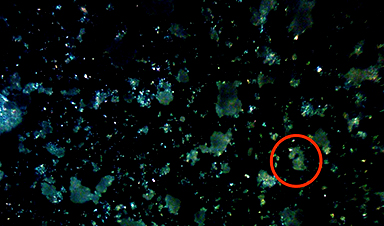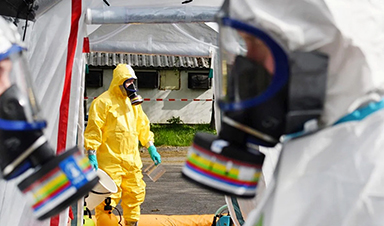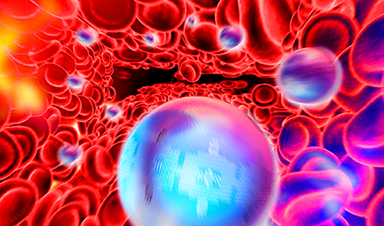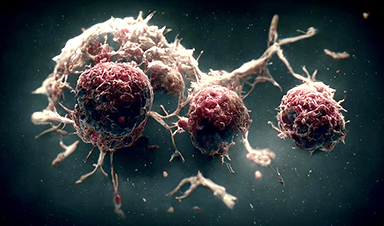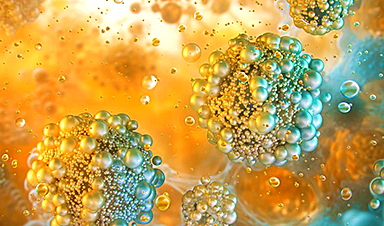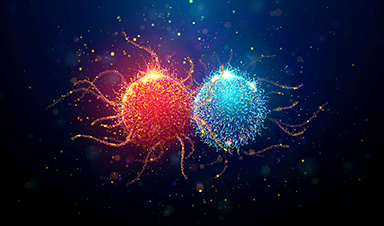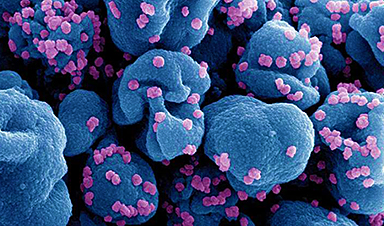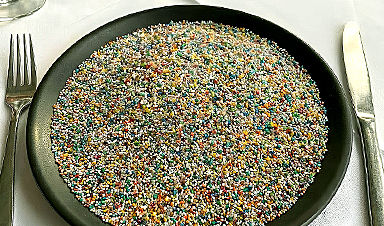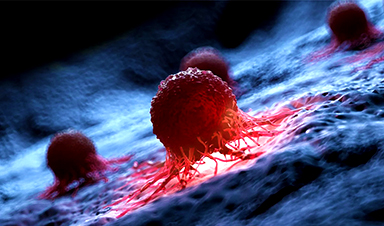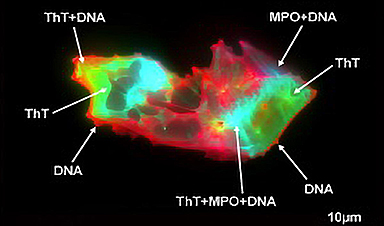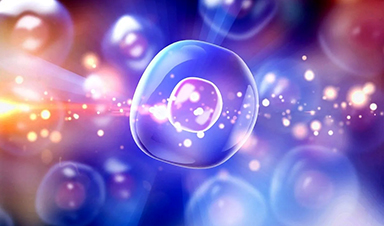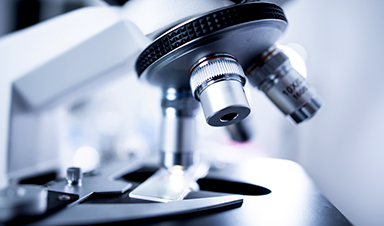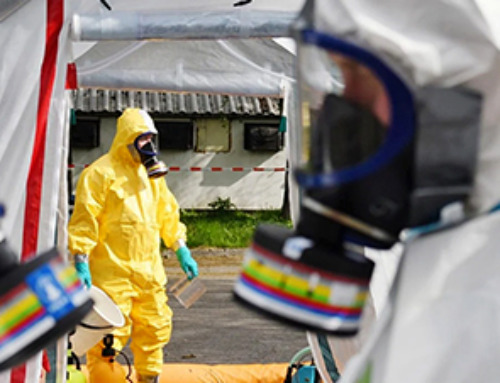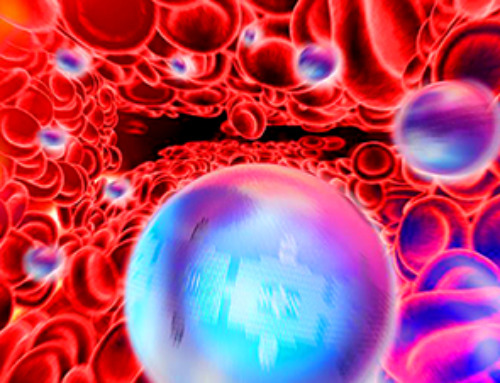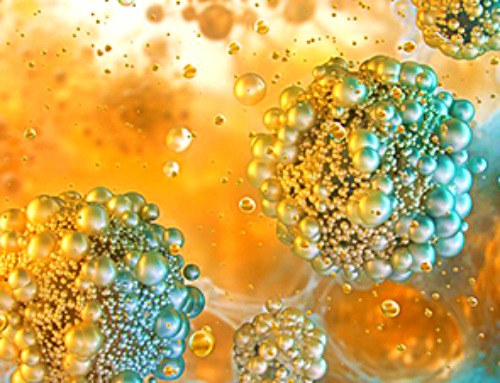The same unique structure that makes plastic so versatile also makes it susceptible to breaking down into harmful micro- and nanoscale particles.
The world is saturated with trillions of microscopic and nanoscopic plastic particles, some smaller than a virus, making them small enough to interfere with cellular function and even alter DNA. Researchers have found these particles in nearly every environment they've studied, from Antarctic snow to human blood.
In a new study, scientists have mapped out the molecular mechanisms behind the widespread formation of these tiny plastic fragments. Since plastic first entered the market 75 years ago, its use has become nearly universal—and so has the presence of nanoplastics.
The same properties that make plastic durable and flexible also make it susceptible to breaking down into nanoscale pieces. This breakdown is especially common in the 75-80% of plastics classified as semicrystalline polymers. The research was led by Sanat Kumar, Michael Bykhovsky, and Charo Gonzalez-Bykhovsky, professors of Chemical Engineering at Columbia Engineering.
If you look at a piece of plastic through a powerful microscope, you'll see alternating layers of hard material and soft material. In the hard layers, plastic molecules are rigidly organized in strong crystal structures. In the soft layers, the molecules lack structure and form a soft, amorphous mass.
When thousands of these layers are stacked together, they create a material that's lightweight, durable, and extremely versatile. Importantly these materials derive their unique properties through the connectivity between the soft and hard phases.
In a paper published March 28 in Nature Communications, the researchers explain how nanoplastics form. They discovered that the process begins in the soft layers, which grow weaker over time due to environmental degradation and can break off even when the plastic is not under stress. By themselves, these soft pieces break down quickly in the environment. Problems arise when the failure of a soft layer allows hard layers to break off. These crystalline fragments are the nano- and microplastics that can persist in the environment for centuries and cause significant damage in living things, including humans.
We sat down with Kumar to learn more about this work.
How does this paper contribute to our understanding of nanoplastics?
There is a lot of anecdotal evidence of nanoplastics — people have found them all over the place and seen them form — but no one had determined the mechanisms behind how they form.
What did you discover?
75% of all plastic used has sort of a brick-and-mortar structure. It's made of really thin alternating layers: hard, soft, hard, soft, and so on. We've known since the 1950s that the soft stuff is holding the hard stuff together.
What we show in the new study is how easily those soft connectors break even under quiescent conditions such as in a landfill. Once that layer fails, the hard segments have nowhere to go — they scatter into the environment.
Why is that a problem?
These pieces float around, and some end up in human bodies. The smallest pieces pass through cells and into the nucleus, where they can start messing with DNA. Nano- and microplastics, which seem to have similar sizes and shapes to asbestos, raise the potential that they could cause cancer, heart disease/stroke, and other diseases.
Is there an engineering solution to address this problem?
Our results suggest that engineering the architecture of the soft layers to be more resilient would decrease the amount of crystalline fragments that break off.
Clearly, focus needs to be placed on this point to reduce the amount of micro and nano plastics created by normal polymer degradation.
How can better understanding nanoplastics improve human health?
Only 2% of plastics are recycled, mostly because it's too expensive. But if you just throw plastic into the environment, it creates micro- and nanoplastics that look like they are going to cause health problems.
If you think about it that way, if you have to choose between the health problems that could be created by the nanoplastics vs. the cost of recycling, then maybe it's actually cheaper to recycle.
Reference: "Mechanism of quiescent nanoplastic formation from semicrystalline polymers" by Nicholas F. Mendez, Vivek Sharma, Michele Valsecchi, Vighnesh Pai, Johnny K. Lee, Linda S. Schadler, Alejandro J. Müller, Shelby Watson-Sanders, Mark Dadmun, Guruswamy Kumaraswamy and Sanat K. Kumar, 28 March 2025, Nature Communications.
DOI: 10.1038/s41467-025-58233-3
The study was funded by the U.S. National Science Foundation and the Basque Government.
News
Fever-Proof Bird Flu Variant Could Fuel the Next Pandemic
Bird flu viruses present a significant risk to humans because they can continue replicating at temperatures higher than a typical fever. Fever is one of the body’s main tools for slowing or stopping viral [...]
What could the future of nanoscience look like?
Society has a lot to thank for nanoscience. From improved health monitoring to reducing the size of electronics, scientists’ ability to delve deeper and better understand chemistry at the nanoscale has opened up numerous [...]
Scientists Melt Cancer’s Hidden “Power Hubs” and Stop Tumor Growth
Researchers discovered that in a rare kidney cancer, RNA builds droplet-like hubs that act as growth control centers inside tumor cells. By engineering a molecular switch to dissolve these hubs, they were able to halt cancer [...]
Platelet-inspired nanoparticles could improve treatment of inflammatory diseases
Scientists have developed platelet-inspired nanoparticles that deliver anti-inflammatory drugs directly to brain-computer interface implants, doubling their effectiveness. Scientists have found a way to improve the performance of brain-computer interface (BCI) electrodes by delivering anti-inflammatory drugs directly [...]
After 150 years, a new chapter in cancer therapy is finally beginning
For decades, researchers have been looking for ways to destroy cancer cells in a targeted manner without further weakening the body. But for many patients whose immune system is severely impaired by chemotherapy or radiation, [...]
Older chemical libraries show promise for fighting resistant strains of COVID-19 virus
SARS‑CoV‑2, the virus that causes COVID-19, continues to mutate, with some newer strains becoming less responsive to current antiviral treatments like Paxlovid. Now, University of California San Diego scientists and an international team of [...]
Lower doses of immunotherapy for skin cancer give better results, study suggests
According to a new study, lower doses of approved immunotherapy for malignant melanoma can give better results against tumors, while reducing side effects. This is reported by researchers at Karolinska Institutet in the Journal of the National [...]
Researchers highlight five pathways through which microplastics can harm the brain
Microplastics could be fueling neurodegenerative diseases like Alzheimer's and Parkinson's, with a new study highlighting five ways microplastics can trigger inflammation and damage in the brain. More than 57 million people live with dementia, [...]
Tiny Metal Nanodots Obliterate Cancer Cells While Largely Sparing Healthy Tissue
Scientists have developed tiny metal-oxide particles that push cancer cells past their stress limits while sparing healthy tissue. An international team led by RMIT University has developed tiny particles called nanodots, crafted from a metallic compound, [...]
Gold Nanoclusters Could Supercharge Quantum Computers
Researchers found that gold “super atoms” can behave like the atoms in top-tier quantum systems—only far easier to scale. These tiny clusters can be customized at the molecular level, offering a powerful, tunable foundation [...]
A single shot of HPV vaccine may be enough to fight cervical cancer, study finds
WASHINGTON -- A single HPV vaccination appears just as effective as two doses at preventing the viral infection that causes cervical cancer, researchers reported Wednesday. HPV, or human papillomavirus, is very common and spread [...]
New technique overcomes technological barrier in 3D brain imaging
Scientists at the Swiss Light Source SLS have succeeded in mapping a piece of brain tissue in 3D at unprecedented resolution using X-rays, non-destructively. The breakthrough overcomes a long-standing technological barrier that had limited [...]
Scientists Uncover Hidden Blood Pattern in Long COVID
Researchers found persistent microclot and NET structures in Long COVID blood that may explain long-lasting symptoms. Researchers examining Long COVID have identified a structural connection between circulating microclots and neutrophil extracellular traps (NETs). The [...]
This Cellular Trick Helps Cancer Spread, but Could Also Stop It
Groups of normal cbiells can sense far into their surroundings, helping explain cancer cell migration. Understanding this ability could lead to new ways to limit tumor spread. The tale of the princess and the [...]
New mRNA therapy targets drug-resistant pneumonia
Bacteria that multiply on surfaces are a major headache in health care when they gain a foothold on, for example, implants or in catheters. Researchers at Chalmers University of Technology in Sweden have found [...]
Current Heart Health Guidelines Are Failing To Catch a Deadly Genetic Killer
New research reveals that standard screening misses most people with a common inherited cholesterol disorder. A Mayo Clinic study reports that current genetic screening guidelines overlook most people who have familial hypercholesterolemia, an inherited disorder that [...]
